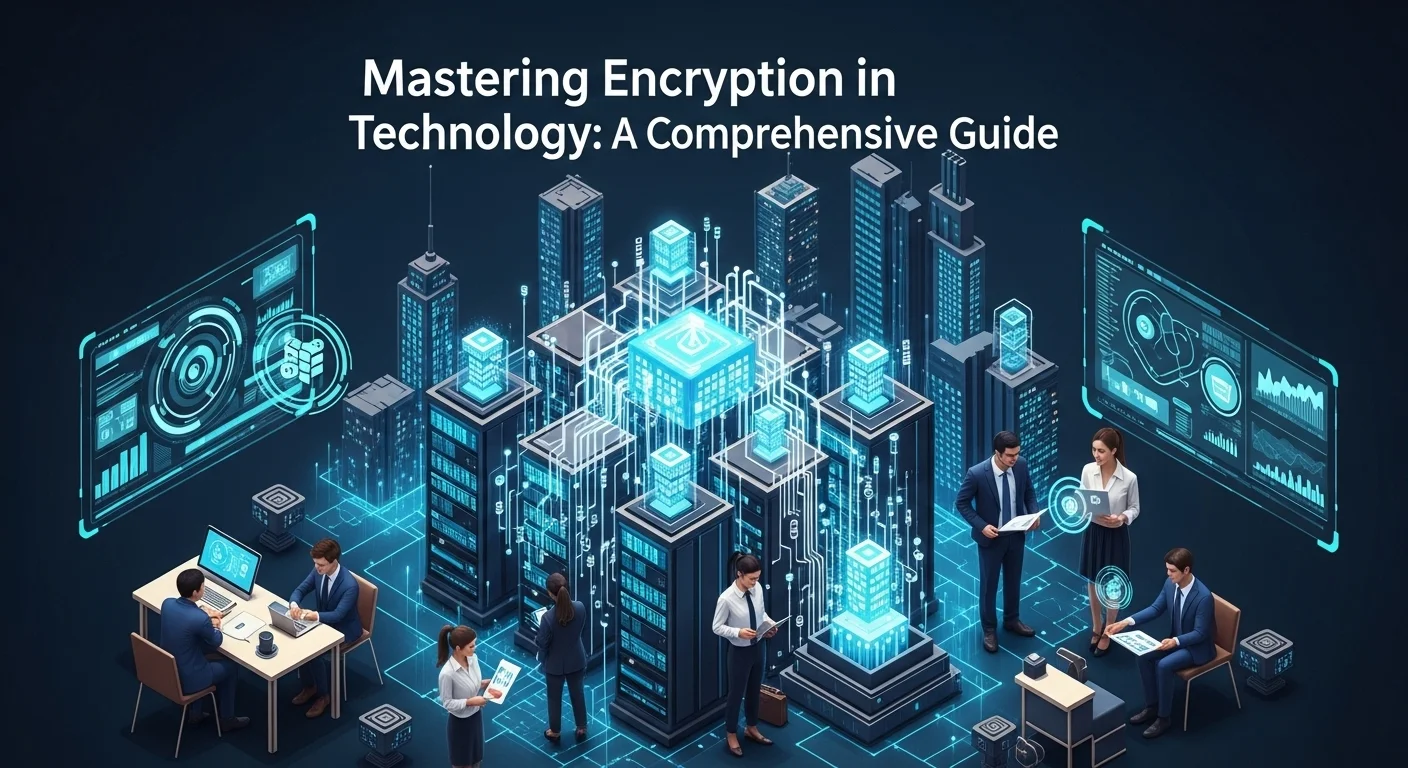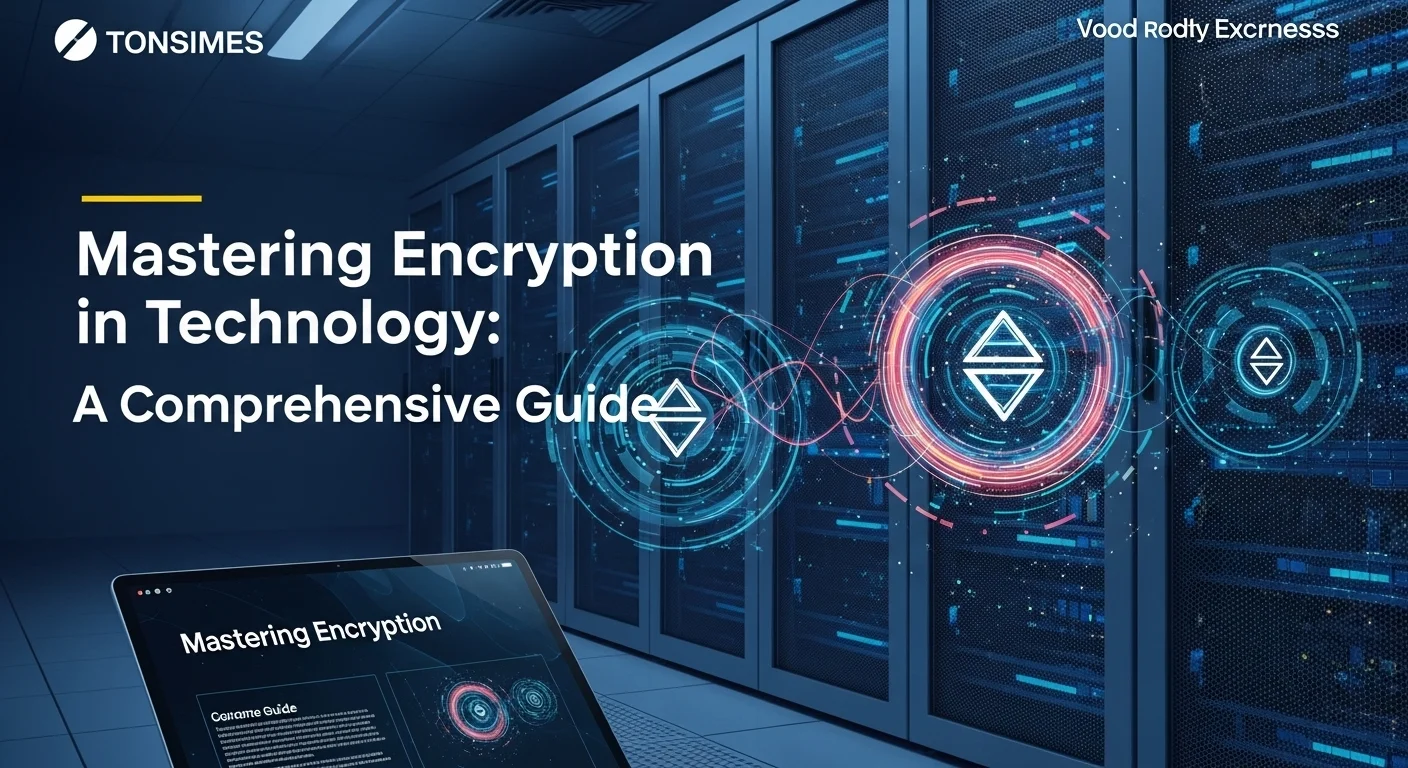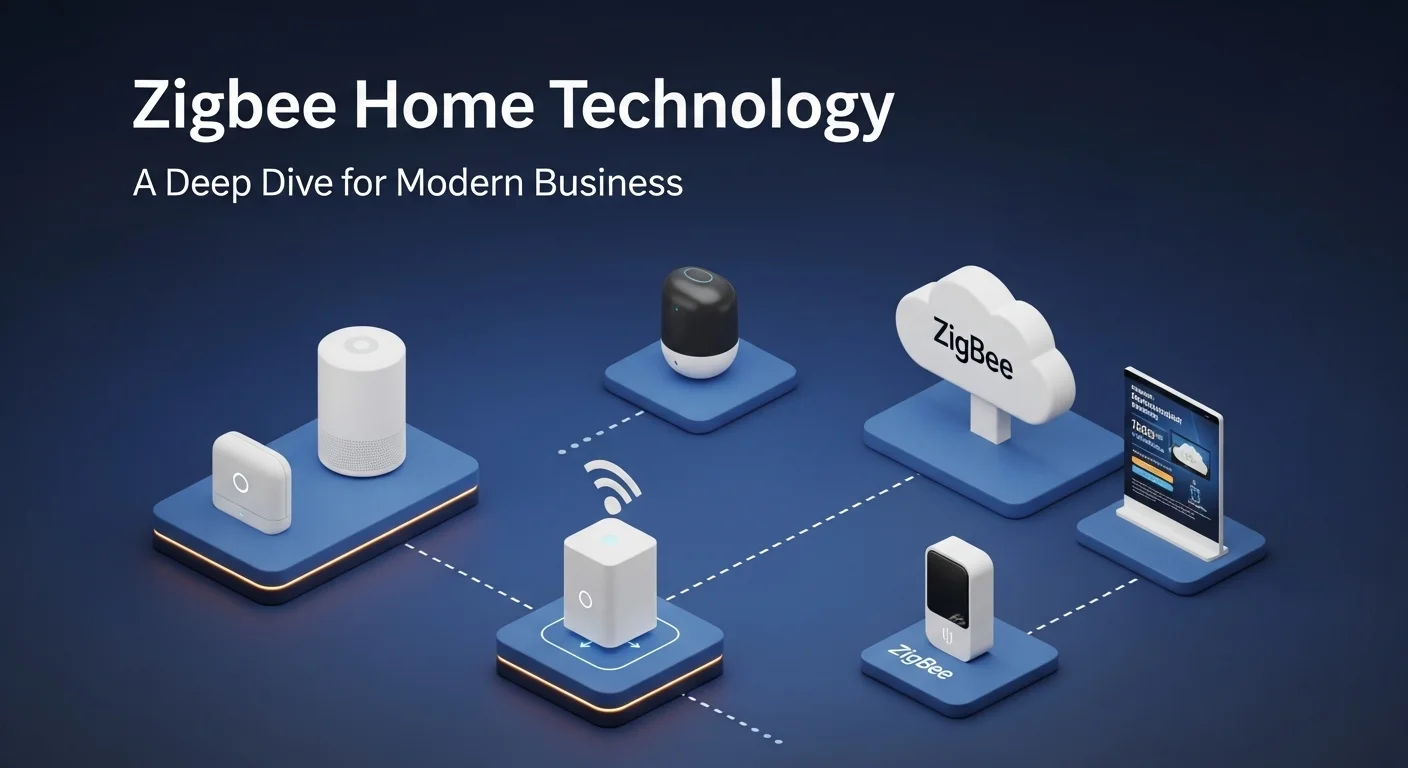A Plain-English Guide to Encryption: How It Protects Your Digital Life and Business

Executive Summary
In all my years working in cybersecurity, I've seen one thing save companies and individuals time and time again: solid encryption. It might sound like a complex technical term, but at its heart, it's simply about locking up your digital information so that only the right people can ever see it. In this guide, I'll walk you through the essentials in plain English. We'll cover everything from the basic concepts to the powerful AES standard that protects your most sensitive files. We'll also demystify end-to-end encryption—the technology that keeps your WhatsApp messages private—and explore why mastering this is absolutely non-negotiable for any modern business. Think of this as your personal, practical roadmap to building digital trust and real-world security.
Table of Contents
Table of Contents
- What is Encryption and Why Does It Matter?
- The Core Idea: How Encryption Actually Works
- Symmetric Encryption: One Key to Rule Them All
- Asymmetric Encryption: The Two-Key System
- The Gold Standard for Privacy: End-to-End Encryption (E2EE)
- Why Your Business Can't Ignore Encryption
What is Encryption and why is it important in Technology?
In an era where our lives are lived online, our data has become incredibly valuable. And just like anything valuable, it needs protection. That's where encryption comes in. I've spent my career explaining this, and here's the simplest way I put it: encryption is the process of taking a readable message (we call this plaintext) and scrambling it into a secret code (ciphertext). To unscramble it and make it readable again, you need a special digital 'key.' Without that key, your private information just looks like meaningless gibberish to prying eyes. This fundamental idea is the barrier standing between your secure data and a potential disaster.
You rely on encryption every single day, often without even knowing it. That little padlock icon you see in your browser's address bar? That's your visual cue that your connection to the website is encrypted, protecting the information you send and receive, like passwords or credit card numbers. Every online bank transaction, private message, and even the data sitting on your smartphone is shielded by some form of data encryption. Without it, our digital world would be a free-for-all for hackers and thieves. It's what gives us confidentiality (keeping secrets secret), integrity (ensuring data isn't tampered with), and authentication (proving you are who you say you are).
The Fundamental Concepts: How Encryption Works
To really appreciate encryption, you just need to understand its two main ingredients: the algorithm and the key.
- Algorithm: This is simply the recipe or set of rules used for the scrambling and unscrambling. Modern algorithms are incredibly complex mathematical formulas, and funnily enough, they are often public knowledge. Security experts around the world test them constantly. Their strength doesn't come from the secrecy of the formula, but from the secrecy of the key.
- Key: This is the secret ingredient. It's a string of characters that the algorithm uses to transform the data. The security of your encrypted information is directly tied to the key's strength. A longer key means exponentially more possible combinations, making it practically impossible for even the world's most powerful computers to guess. For instance, a standard AES encryption key with 128 bits has a number of possible combinations so large it's hard to even write down.
Encryption methods are generally split into two main families, each with its own job: Symmetric and Asymmetric Encryption.
Symmetric Encryption: The Single-Key System
Symmetric encryption is straightforward: it uses the same single key for both locking (encrypting) and unlocking (decrypting) the data. Imagine a safe that uses the same key to open and close. This method is incredibly fast and efficient, which makes it perfect for encrypting large amounts of data, like an entire hard drive or a huge database. The reigning champion of this category is the Advanced Encryption Standard (AES). It’s so trusted that it's used by the U.S. government to protect classified information. AES encryption is the gold standard for securing 'data at rest'—the data just sitting on your devices. The only tricky part is securely sharing that single key with someone else. If it gets intercepted, your security is blown. That's where its partner comes in.
Asymmetric Encryption: The Public and Private Key Duo
Asymmetric encryption, or public-key cryptography, brilliantly solves the key-sharing problem by using a pair of keys: a public key and a private key. The public key can be shared with anyone, like handing out your home address. The private key, however, is kept completely secret by the owner, like the key to your front door. Information locked with the public key can *only* be unlocked with the corresponding private key. So, if someone wants to send you a secure message, they lock it with your public key. The message is then unreadable to anyone but you, because only you have the secret private key to unlock it. This clever system is the backbone of secure internet communication. It's a bit slower than symmetric encryption, so it's often used just to safely exchange a symmetric key at the start of a conversation.
The Rise of End-to-End Encryption: The WhatsApp Example
One of the most important applications for everyday users is end-to-end encryption (E2EE). This is a system where a message is locked on the sender's device and can only be unlocked on the recipient's device. No one in between—not your internet provider, not even the company running the app—can read the message. This offers the highest level of communication privacy.
The most famous example is end-to-end encryption on WhatsApp. When you send a message, it’s scrambled with a unique lock, and only the person you're talking to has the specific key to unlock it. This happens automatically for over two billion users, which has massively raised the global standard for private conversation. It even uses a clever technique called 'forward secrecy,' which means that even if someone managed to steal a key from one message, they couldn't use it to decrypt any of your past or future messages. It's a powerful security feature that now feels like a basic right.
Business Applications and Benefits of Encryption
For any business, data encryption is not just a 'nice to have'—it's a core part of risk management, customer trust, and legal compliance. The advantages are clear:
- Protecting Your Crown Jewels: Businesses hold sensitive data—customer info, financial records, secret formulas. Encryption is your last line of defense. If a hacker breaks in and steals your files, they're useless if they're properly encrypted. I’ve seen this prevent catastrophic damage firsthand.
- Staying on the Right Side of the Law: Regulations like GDPR in Europe and HIPAA in the U.S. have strict rules about data protection. Using strong encryption is often a required step to comply and avoid massive fines.
- Building and Keeping Customer Trust: People are more aware of data privacy than ever. When you show you're serious about protecting their information by using robust tools like end-to-end encryption, you build a reputation for being trustworthy.
- Securing a Modern Workforce: With remote work and cloud services, company data is everywhere. Encryption is essential for protecting that data as it travels across public Wi-Fi or sits on a third-party server, ensuring your business stays secure no matter where your team is working.
From the simple act of scrambling a message to the complex systems that power global e-commerce, encryption is the unsung hero of our digital lives, working silently to keep us safe.

A Complete Guide to Encryption in Technology and Business
For any tech professional or business leader, a deeper grasp of encryption isn't just academic—it's essential for building a truly secure digital foundation. Let's move beyond the basics and look at the specific methods and strategies you can use to implement powerful data encryption in the real world.
A Closer Look: Symmetric vs. Asymmetric Encryption
We've covered the basics, but knowing the technical differences helps you choose the right tool for the right job.
Symmetric Encryption: The Heavy Lifter
I call these the high-speed engines of the encryption world. Their speed makes them the only logical choice for encrypting huge amounts of data.
- Advanced Encryption Standard (AES): This is the undisputed champion. When I advise clients, AES encryption is the standard. It encrypts data in fixed-size blocks and is incredibly difficult to crack. While the 128-bit key is strong, the 256-bit version is my recommendation for future-proofing your security against even theoretical threats. You'll find AES everywhere, from the BitLocker on your Windows PC to the systems protecting massive corporate databases.
- The Old Guard (DES and 3DES): You might still run into these. DES, with its tiny 56-bit key, is now considered broken and insecure. Its successor, 3DES, is much better but is slow and clunky compared to AES. If you see these in your systems, it's a sign that an upgrade is overdue.
The Catch: The biggest headache with symmetric encryption has always been key management. How do you get that secret key to the other person without someone peeking? Emailing it is a terrible idea. This is the problem that asymmetric encryption was born to solve.
Asymmetric Encryption: The Secure Handshake
The beauty of the public/private key pair is that it solves the key exchange problem. It’s what makes us trust the internet.
- RSA (Rivest-Shamir-Adleman): This is the old, reliable algorithm you've probably heard of. It's the magic behind the secure connection (SSL/TLS) your browser makes with your bank's website. Your browser uses the bank's public key to securely send a temporary symmetric key, and then they use that fast key for the rest of the session.
- Elliptic Curve Cryptography (ECC): This is the newer, more efficient kid on the block. ECC provides the same level of security as RSA but with much smaller keys. This is a huge deal for devices with less processing power, like our smartphones and all the smart 'Internet of Things' devices popping up everywhere. It’s faster, less demanding, and the direction much of the industry is heading.
The Trade-Off: The price for this security and convenience is speed. Asymmetric encryption is a slow, careful process, which is why we don't use it to encrypt the data itself, only to set up the secure channel.
The Power of Hybrid Encryption
In the real world, we almost always use a hybrid model that gets the best of both worlds. Here’s how that secure connection to a website (HTTPS) really works, step-by-step:
- Your browser says hello to the server.
- The server sends back its public key (inside its SSL certificate).
- Your browser checks the certificate and creates a new, one-time-use symmetric key (like an AES key).
- Your browser then uses the server's public key to lock up this new symmetric key and sends it over.
- The server uses its private key to unlock the message and get the symmetric key.
- Voilà! Both sides now have the same secret, fast symmetric key, and they use it to encrypt all the data for the rest of your visit.
This combination gives you the secure key exchange of asymmetric encryption and the high-speed performance of symmetric encryption for the actual data encryption.
End-to-End Encryption in Action: More Than Just Messaging
While end-to-end encryption on WhatsApp brought E2EE to the masses, this principle is vital for business security.
- Secure Business Messaging: Apps like Signal (my personal recommendation for its commitment to privacy) and enterprise-grade tools like Wickr offer true E2EE for company communications. This ensures internal discussions are shielded from everyone, including the platform provider.
- Secure Email: Regular email is like sending a postcard; anyone can read it along the way. But technologies like PGP or services like ProtonMail apply end-to-end encryption to email, ensuring only the intended recipient can ever read the message content.
- Secure Cloud Storage: This is a big one. Many cloud services encrypt your data, but they hold the keys. This means they *could* access it. True E2EE services like Tresorit or Sync.com are 'zero-knowledge,' meaning you hold the keys, and they have no way of seeing what you've stored. For sensitive intellectual property, this is the only way to go.
Your Toolkit: Business Solutions and Resources
A smart encryption strategy protects data in its three states: at rest (stored), in transit (moving), and in use (being processed).
Encryption for Data at Rest
This protects data sitting on a drive or server.
- Full-Disk Encryption (FDE): Tools like Microsoft's BitLocker and Apple's FileVault are a must-have. They encrypt the entire drive on a laptop, making the data useless if the device is stolen.
- Database Encryption: Systems like Microsoft SQL Server and Oracle offer Transparent Data Encryption (TDE), which encrypts the entire database file. It's a simple, powerful way to protect huge amounts of data using strong algorithms like AES encryption.
- Cloud Storage Encryption: Major cloud providers like AWS and Azure encrypt your data by default. They also offer key management services that let you control your own encryption keys for an added layer of security.
Encryption for Data in Transit
This protects data as it travels across a network.
- TLS/SSL: This is non-negotiable for any website or API. It's what puts the 'S' in HTTPS and keeps data safe as it moves across the internet.
- Virtual Private Networks (VPNs): A VPN creates a secure, encrypted tunnel for all your internet traffic. It's the cornerstone of secure remote work, especially on public Wi-Fi.
- Secure Wi-Fi: Always use WPA3 (or at least WPA2) on your Wi-Fi networks. These standards use strong AES encryption to protect your wireless traffic from snooping neighbors.
By understanding the technical details of tools like AES encryption and the strategic value of models like end-to-end encryption, you can build a formidable defense for your most valuable digital assets.

Practical Tips and Strategies to Master Encryption
Putting encryption into practice is more than just flipping a switch; it’s about building a smart, ongoing strategy. Over my career, I've seen that how you manage encryption is just as crucial as the technology itself. Here are my go-to tips and best practices for using data encryption to genuinely improve your security and peace of mind.
My Golden Rules for Encryption Implementation
If you're going to do it, do it right. Follow these core principles:
- 1. Know Your Data, Protect What Matters: You can't protect what you don't know you have. The first step I always recommend is to map out your data. Identify the sensitive stuff—customer information, financial records, trade secrets. This lets you apply your strongest encryption efforts where they'll have the most impact.
- 2. Encrypt Data Everywhere: A chain is only as strong as its weakest link. A solid strategy protects data in all three of its states:
- At Rest: Use full-disk encryption (BitLocker, FileVault) on all laptops and servers. Encrypt your databases and, most importantly, your backups. If a drive is stolen, the data on it should be nothing but gibberish.
- In Transit: Insist on modern TLS for all web traffic. Use a VPN for any remote access to your network. Don't forget to secure your internal network traffic too; the assumption that your internal network is 'safe' is an outdated one.
- In Use: This is the trickiest state, as data has to be decrypted to be worked on. While advanced tech is emerging here, the focus for now should be on strict access controls to prevent unauthorized viewing of data while it's active in memory.
- 3. Use the Right Tools for the Job: Stick with public, well-vetted algorithms. For symmetric encryption, AES encryption with a 256-bit key is the gold standard. For asymmetric, move towards RSA-3072 or ECC. The biggest mistake I see is people using old, broken standards like DES or creating their own 'secret' algorithm—this is a recipe for failure.
The Most Critical Part: Key Management
Here’s a hard lesson I’ve learned over the years: you can have the strongest encryption in the world, but if you mismanage your keys, it’s all for nothing. Your keys are literally the keys to your digital kingdom. Getting this right is not just a 'best practice'; it's everything.
- Generation: Keys must be generated with true randomness. Predictable keys are easily cracked.
- Storage: Never, ever store keys next to the data they protect. Storing them in a plain text file or, worse, in your application's source code, is asking for a breach. Use a dedicated Hardware Security Module (HSM) or a trusted cloud Key Management Service (KMS).
- Access Control: Be ruthless with access. Only the people and systems that absolutely need a key should have access to it. This is the principle of least privilege in action.
- Rotation: Regularly change your keys. This limits the blast radius if a key is ever compromised. The old keys are then securely archived just in case you need to access old backups.
- Destruction: When a key is truly no longer needed, destroy it completely and securely. This is a vital step for regulations that include the 'right to be forgotten.'
Make End-to-End Encryption Part of Your Daily Life
For both personal and business use, actively choosing end-to-end encryption can dramatically boost your privacy.
- Pick the Right Messaging Apps: Default to apps that offer E2EE by default. While end-to-end encryption on WhatsApp is good, security professionals often prefer Signal for its open-source transparency and unwavering focus on privacy.
- Train Your Team: In a business, you can't just give people a secure tool; you have to explain the *why*. Create a simple policy: sensitive business discussions happen on the E2EE platform, period.
- Verify Your Contacts: For very sensitive conversations, take 30 seconds to verify your contact using the app's safety number or QR code feature. It’s a small step that ensures you aren't being subjected to a sophisticated 'man-in-the-middle' attack.
Looking Ahead: Preparing for the Quantum Threat
While today's standards like AES encryption are safe from current computers, the long-term threat of quantum computers is real. These future machines could potentially break the asymmetric encryption we rely on for key exchange. This field of study is called Post-Quantum Cryptography (PQC).
You don't need to panic, but you should start planning. The key is to build 'crypto-agility' into your systems. This means designing them so you can easily swap out an old encryption algorithm for a new one as standards evolve. Thinking about this now is the mark of a mature and forward-looking security program.
A Great Resource for Deeper Learning
If you want to dig even deeper into the technical nuts and bolts, I often point people to the guides at the Kaspersky Resource Center. They do a fantastic job of breaking down complex topics, like how different types of data encryption work, in a clear and authoritative way.
Ultimately, a successful encryption strategy is a mix of the right technology, smart processes, and human education. By mastering key management, championing end-to-end encryption, and using strong algorithms like AES encryption, you build a resilient defense for your digital world. It's not just a tool; it's the foundation of trust and security in our modern age.
Expert Reviews & Testimonials
Sarah Johnson, Business Owner ⭐⭐⭐
The information on encryption is solid, but as a business owner, I'd have loved a few more real-world examples for small companies like mine.
Mike Chen, IT Consultant ⭐⭐⭐⭐
A really useful article on encryption. It cleared up a lot for me, though I think some of the deeper concepts could be simplified just a little bit more.
Emma Davis, Tech Expert ⭐⭐⭐⭐⭐
Excellent article! As a tech specialist, I found this incredibly comprehensive. It helped a lot with my own work, and everything was explained perfectly.



